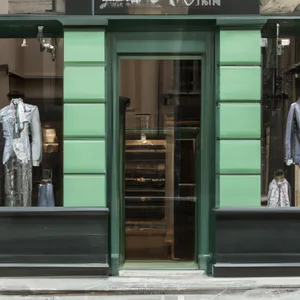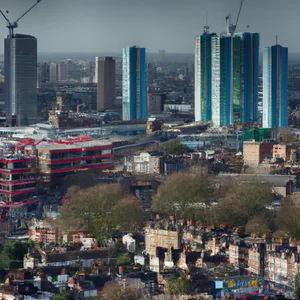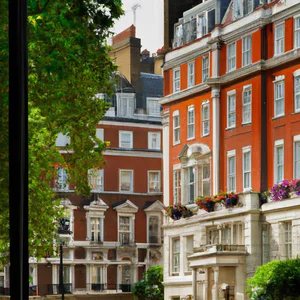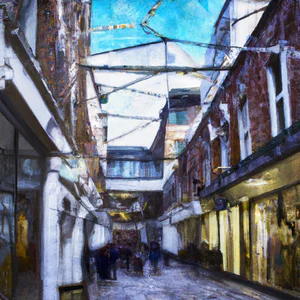Book your experience
Neighborhoods of London: guide
Ah, London! This city is like a huge puzzle, full of pieces that fit together in surprising ways. If you’re thinking of spending some time there and wondering where to settle, well, you’re in the right place. Here is a small guide to the various neighborhoods, so you can choose the one that’s right for you.
First of all, let’s talk about Soho. Oh, Soho is a real paradise for those who love nightlife and trendy restaurants. It’s like a big creativity laboratory, where you can find everything from historic pubs to cool restaurants. The first time I went, I got lost in a Thai restaurant that looked like something out of a movie: soft lights, incredible aromas, and a curry that, believe me, I will never forget. If you’re a fun-loving type, you can’t go wrong.
Then there’s Camden, which is a bit of a rock star of the London neighbourhoods. I’m telling you, if you love markets and live music, this is the place! It’s like a big festival that never ends. The first time I went there, I was amazed by all those stalls selling everything from vintage clothes to bizarre gadgets. And let’s not talk about the food options - a culinary journey around the world in one place!
And who can forget Notting Hill? That area is like a postcard. Colorful houses, charming streets and the famous Portobello market. I don’t know about you, but for me it’s the perfect place for a Sunday stroll. You sit in a café, sip a cappuccino and simply watch life go by. It’s a bit like being in a romantic movie, with that background music that makes you feel a bit dreamy.
If you’re looking for something quieter, you might consider Richmond. It’s a little further from the centre, but has some beautiful parks and views of the Thames that take your breath away. The first time I went there, I took a long walk and felt like I was in another dimension, away from the chaos of the city.
In short, London has a neighborhood for every type of traveller. Of course, there are also other options such as Shoreditch, which is very trendy, or Kensington, which is a little more chic and refined. But ultimately, I think the choice really depends on what you’re looking for: do you want fun, relaxation, or maybe a mix of both? I’m not sure, but following your instincts is always a good idea!
Discover London’s historic neighborhoods
A journey through time
I remember the first day I set foot in London, with my faded map and a heart full of curiosity. Walking along the cobbled streets of Covent Garden, I came across a street performer playing enchanting tunes, surrounded by a vibrant and historic atmosphere. This is just a taste of what London has to offer in its historic neighbourhoods, each with a story to tell.
Treasures to discover
London is a patchwork of historic neighbourhoods, each with its own unique character. From the majestic Houses of Westminster to Southwark, where medieval history intertwines with the modern, there are countless opportunities to explore this metropolis’ past.
- The City of London is the financial heart, but also a place full of history, with St. Paul’s Cathedral standing majestically.
- Notting Hill, famous for its Portobello market, is a neighborhood that vibrates with colours, cultures and stories of bygone eras.
- Greenwich, with its meridian and famous observatory, is another jewel that tells the story of navigation and time.
An insider tip
If you want a truly authentic experience, I recommend visiting Southbank, where you can find Borough Market. Here, away from the tourist crowds, you can savor local culinary delights and chat with vendors. This market is not just a place to eat, but a living experience of how London celebrates its culinary diversity.
The cultural impact
Each neighborhood tells the story of London and its transformations. Roman, medieval and Victorian influences are evident in architecture, art and daily life. This mix makes London not just a city to visit, but a place to live, where every corner has a profound historical meaning.
Sustainability and responsible tourism
In a time when responsible tourism is more important than ever, many historic neighborhoods are adopting sustainable practices. From eco-friendly cafes in Shoreditch to clean-up initiatives in historic parks, visitors can help preserve London’s beauty while immersing themselves in its history.
An unmissable activity
Don’t miss the opportunity to take a walk along the Thames. This river, which has seen centuries of history, offers a unique perspective on London’s historic neighbourhoods. You can also rent a bike and ride the cycle paths that run along the river, exploring hidden corners and discovering stories you might otherwise miss.
Myths to dispel
A common misconception is that historic neighborhoods are too touristy and expensive. In fact, many of them offer free or low-cost experiences, such as public parks and museums that don’t require an entrance fee.
Final reflection
London, with its historic neighborhoods, is an invitation to explore and discover. Every step along its cobbled streets tells a story. What part of London’s history intrigues you the most? The city is waiting to reveal its secrets to you, one after another.
Where to stay: from trendy to traditional
A personal experience
I still remember the first time I set foot in London, when a friend took me to the Notting Hill neighborhood. The vibrant atmosphere, the colorful houses and the famous Portobello Road market immediately captivated me. But what struck me most was the variety of accommodations the city offers. From elegant boutique hotels to cozy guesthouses, London is a patchwork of options for every type of traveller.
Practical information
When it comes to where to stay in London, the possibilities are practically endless. Here are some of the most recommended areas:
- Soho: the beating heart of nightlife, perfect for those who love trendy clubs and trendy restaurants.
- Kensington: for a more sophisticated and traditional atmosphere, with elegant hotels within walking distance of museums.
- Shoreditch: Ideal for young travellers, with a myriad of uniquely designed hostels and hotels.
- Greenwich: If you’re looking for tranquility and a touch of history, this area is perfect, with beautiful parks and breathtaking views of the Thames.
According to VisitBritain, it is advisable to book in advance, especially during events such as the Notting Hill Carnival or the Christmas holidays, to ensure you get the best rates.
A little-known tip
If you want an authentic experience, try looking for accommodation through home exchange platforms like HomeExchange. Not only will you save money, but you will also have the opportunity to live like a true Londoner, immersed in local culture.
The cultural impact
Choosing which neighborhood to stay in can greatly influence your experience in London. Each area has a unique history and distinct atmosphere. For example, Soho is known for its LGBTQ+ history and vibrant music scene, while Kensington is symbolic of British nobility. Choosing the right place for your stay can enrich your understanding of the city and its inhabitants.
Sustainability in the living room
As you explore lodging options, consider opting for properties that employ sustainable practices, such as using renewable energy and reducing waste. Many hotels in London are becoming more eco-friendly, offering recycling systems and organic cleaning products.
An immersion in the atmosphere
Imagine waking up in a welcoming b&b in South Kensington, with windows overlooking a lovely garden. While you enjoy a traditional morning tea, the scent of fresh bread from the local bakery invites you to go out and discover the lively streets.
Activities to try
Don’t miss a walk in Hyde Park if you choose to stay in the area. Take advantage of a bike rental and ride the trails, or simply relax with a book on a bench, surrounded by the greenery and beauty of the gardens.
Myths and misconceptions
One of the most common myths is that hotels in London are always expensive. In fact, there are many affordable and quality accommodation options, especially if you are willing to explore less touristy but equally charming neighborhoods.
Final reflection
Choosing where to stay in London can seem overwhelming, but each neighborhood has its own unique charm. We invite you to consider not only the price, but also the atmosphere and experiences you want to have. What neighborhood attracts you the most?
Camden Secrets: Culture and Music
Camden is a neighborhood that lives and breathes creativity, a place where every corner tells a story. I still remember my first visit to Camden Town: the sound of electric guitars mixing with the scent of street food coming from the market, while street artists performed with passion. Every step I took among the markets and alternative shops made me feel part of something unique and vibrant, an experience that left a profound mark on me.
A dive into the beating heart of Camden
Camden isn’t just a place of worship for music lovers; it is also a melting pot of different cultures. With such a diverse population, the neighborhood is a reflection of contemporary London, where traditions mix with new trends. Every Saturday, Camden Market attracts thousands of visitors, but today there are also many other hidden gems to explore.
For those looking for something more authentic, I recommend visiting Camden Lock Market early in the morning, before the crowds arrive. Here, you’ll find local artisans selling artwork, handmade jewelry, and vintage clothing. An unmissable stop is Cyberdog, a futuristic clothing store that looks like it came out of a science fiction film. Don’t forget to stop and enjoy a bagel with smoked salmon at the famous The Bagel Shop.
An insider tip: secret concerts
An unconventional tip is to keep an eye out for secret concerts taking place in intimate venues such as pubs and art galleries. Many emerging artists choose Camden as a stage for their performances, often only publicizing events via social media. So follow the local pages so you don’t miss the opportunity to attend an exclusive concert, where the music is as authentic as the atmosphere.
Culture and history: the evolution of Camden
Camden has been a center of cultural innovation since the 1960s, when it became a hub for youth movements, from punk culture to new sounds. Today, music continues to be a key element of its identity, with iconic venues like the Roundhouse hosting concerts by world-famous artists. This isn’t just a neighborhood; it’s a part of British music history.
Responsible tourism in Camden
If you want to experience Camden sustainably, consider using bicycles to explore the neighborhood. There are many cycle paths and the bike sharing service is easily accessible. Also, support local traders and try to avoid international chains, thus helping to keep the authenticity of this neighborhood alive.
Conclusion: Reflections on Camden
Camden is a microcosm of creativity and culture, a place where music and art come together in a timeless experience. The next time you find yourself in London, I invite you to get lost in its alleys and discover the secrets it hides. What is your most vivid memory of a neighborhood that inspired you?
Sustainability in London: eco-friendly stays
A personal experience of eco-consciousness
During my last trip to London, I had the opportunity to stay in an eco-friendly hotel located in the heart of Southwark. Not only was the hotel equipped with solar panels and rainwater collection systems, but the furnishings were made from recycled materials. While sipping organic tea in the lobby, I discovered that the hotel collaborated with local businesses to offer fresh, sustainable products to their guests. This experience opened my eyes to the importance of traveling responsibly, without compromising comfort and relaxation.
Practical and up-to-date information
London is a city that is making giant strides towards sustainability and responsible tourism. According to the London Sustainable Development Commission, almost 70% of the capital’s hotels have adopted eco-friendly practices. Many of these offer special packages for eco-conscious travellers, such as The Hoxton, which uses local and organic produce in its restaurant. For a green stay, also consider Z Hotel Shoreditch, which employs waste-reduction measures and offers free bikes for exploring the city.
An insider tip
A little-known secret is that many eco-friendly hotels in London offer guided tours of their neighbourhoods, highlighting local sustainability initiatives. Ask your hotel if they have partnerships with local guides who can take you on a walking or cycling tour to discover local organic markets and urban gardening projects. This experience will not only give you a unique perspective on London life, but will also help support local communities.
Cultural and historical impact
Sustainability in London is not just a recent fad; it is rooted in the culture of the city. Since Victorian times, London has faced environmental challenges, such as pollution and waste management. Today, the British capital is committed to repairing the damage of the past and building a greener future, encouraging sustainable practices not only in the tourism and hospitality sectors, but also in the daily lives of its citizens.
Responsible tourism practices
When you choose an eco-friendly stay in London, you can also participate in responsible tourism initiatives. Many hotels offer carbon offset programs, contributing to reforestation or renewable energy projects. Choosing a hotel with these practices not only enriches your experience, but also helps preserve London’s natural beauty for future generations.
An activity worth trying
After checking into your hotel, don’t miss the opportunity to visit Kew Gardens, one of the most famous botanical gardens in the world. Here you can explore a wide range of sustainable plants and participate in workshops that teach eco-friendly gardening practices. It’s a perfect way to immerse yourself in the beauty of London’s nature, whilst learning how to help preserve it.
Myths and misconceptions
A common misconception is that eco-friendly options are necessarily more expensive. In fact, many sustainable hotels offer competitive rates compared to their traditional counterparts, especially if you book in advance and take advantage of special offers.
Final reflection
As you plan your trip to London, consider: How important is sustainable travel to you? Every choice you make, from your accommodation to the restaurants you frequent, can have a significant impact. London offers amazing opportunities to explore and live responsibly. Be part of the change and discover how your travel can contribute to a greener future.
Live like a local: authentic experiences
A surprising encounter in the heart of Brixton
I still remember my first visit to Brixton, a vibrant and multicultural neighborhood in London. As I walked through the crowded streets, the scent of spices and the sound of reggae music filled the air. Upon entering a small market, I was greeted by a street food vendor who offered me a portion of jerk chicken, a Jamaican dish I had never tasted before. His enthusiasm and passion for the local cuisine made me feel like I was part of the community, rather than just a visiting tourist.
Living like a local: where to go and what to do
If you really want to live like a local in London, start by exploring neighborhood markets. In addition to Brixton, don’t miss the famous Borough Market, where you can enjoy fresh produce and traditional dishes from around the world. According to an article published in Time Out London, these markets are not just places to shop, but real cultural centers where Londoners meet and socialise.
Unconventional advice? Take a local cooking class, such as those offered by The Cookery School in Kennington, where you can learn to prepare traditional British dishes with fresh, local ingredients. This experience will not only teach you recipes, but will also give you the opportunity to meet other people in the area.
The cultural and historical impact of living like a local
Living like a local also means understanding the history and culture that permeates London. The city is a melting pot of cultures, and each neighborhood has a unique story to tell. Brixton, for example, is a symbol of Afro-Caribbean culture in London, which has influenced music, cuisine and art. By visiting places like Brixton Academy, you can immerse yourself in the music scene that launched world-famous artists.
Sustainability and responsibility in tourism
Sustainable tourism options are increasingly available to travellers. Many local markets and restaurants promote eco-friendly practices, using organic and seasonal ingredients. Taking part in guided walking or cycling tours through historic neighborhoods not only allows you to explore the city in a sustainable way, but also to discover hidden corners and little-known stories.
An activity not to be missed
For an authentic experience, I recommend taking a pub quiz in one of the many traditional pubs, such as The Old Red Lion in Islington. Here, you can not only test your knowledge, but also interact with locals and enjoy a convivial environment.
Myths and misconceptions
It is often thought that to live like a local you must necessarily avoid tourist attractions. In fact, you can integrate both experiences. Many Londoners also visit iconic sights such as Big Ben and the British Museum, but they do so at less crowded times or on special occasions.
A final reflection
After spending time in London, I realized that living like a local is not just about places to visit, but about human connections and cultural discoveries. What authentic experiences would you like to try to feel part of this incredible city?
Notting Hill: beyond the famous market
When I visited Notting Hill for the first time, I found myself walking among the colorful terraced houses and flowers adorning the balconies. It was one of those London mornings when the sun was shining, and the streets seemed to sparkle with life. As the famous Portobello Road Market prepared to open, I decided to explore the side streets, discovering hidden corners and quirky boutiques that told stories of a vibrant past.
A journey through time through the streets of Notting Hill
Notting Hill is best known for its market, but there’s much more to discover beyond the antique stalls. The origins of the neighborhood date back to the 19th century, when it became an important residential area for the upper class, and then transformed into a cultural melting pot following the arrival of Caribbean communities. This mix of cultures has given rise to iconic events such as the Notting Hill Carnival, a celebration that attracts visitors from all over the world.
An insider tip
A little-known tip is to visit the Leighton House Museum, a house museum dedicated to the Victorian artist Sir Frederic Leighton. This architectural jewel, hidden among the streets of Notting Hill, offers an intimate and unique experience, with richly decorated rooms and an exclusive art collection. Opening hours may vary, so it’s best to check the official website before you go.
Culture and sustainability
The cultural impact of Notting Hill is undeniable, but it is essential to also consider sustainable tourism. Many of the local shops and restaurants are committed to using organic ingredients and eco-friendly practices. Choosing to eat at restaurants that support local producers not only helps the neighborhood’s economy, but also helps reduce the environmental impact of your stay.
Discover the unique atmosphere of Notting Hill
Walking through the streets of Notting Hill, you can easily get lost among the bright colors of the houses and the scent of the flowers. The outdoor cafes invite you to take a relaxing break, and it is not uncommon to see street artists entertaining passers-by with their music. An unmissable activity is a visit to the Portobello Green Market, where in addition to the classic souvenirs you can find local crafts and unique pieces.
Myths and misconceptions
A common misconception is that Notting Hill is just a tourist destination. Although the market attracts visitors, the true essence of the neighborhood is found in its quieter corners, where locals meet to drink coffee or chat in the parks. Discovering these less crowded places can prove to be a much more authentic experience.
Final reflection
Next time you visit London, take some time to explore Notting Hill beyond the market. What was your most memorable experience in a neighborhood that goes beyond tourist attractions? The magic of this place might surprise you and give you a new perspective on the British capital.
The hidden side of Shoreditch: street art
Walking through the streets of Shoreditch, I was lucky enough to come across a group of artists painting an impressive mural. Their enthusiasm and creativity were palpable, and I had the opportunity to exchange a few words with them. This experience made me understand how street art is not just an artistic expression, but also a way to tell stories, experiences and cultures.
A visual journey among the murals
Shoreditch, located in the heart of London’s East End, is the neighborhood where street art meets history and innovation. Its once neglected streets are now an open-air museum, with works by local and international artists adorning almost every corner. From Banksy’s giant murals to smaller, hidden works, each piece tells a unique story. According to Shoreditch Street Art Tours, a guided tour can give you an in-depth perspective on these masterpieces, as well as share information about who created them and the meaning behind them.
An insider tip
If you really want to discover the more authentic side of Shoreditch, I recommend exploring the streets less travelled, such as Pedley Street and Fashion Street. Here, you will find works of art that often escape tourists. Many visitors focus on the main streets, but some of the most fascinating murals are found in little-known places, where the local community is brings together and art blends with everyday life.
The cultural impact of Shoreditch
Shoreditch’s street art is a reflection of its evolution as a cultural centre. In the 1990s, the neighborhood was known for its nightlife and alternative spirit. Today, street art not only attracts tourists, but also serves as a form of social and political activism, addressing issues of justice, identity and belonging. The works can change quickly, making each visit a fresh and surprising experience.
Sustainability and responsibility
When exploring Shoreditch, consider supporting local artists and art galleries by attending events that promote sustainability. Many artists use recycled materials or eco-friendly techniques, contributing to a responsible artistic community. Plus, many of the area’s restaurants and cafes offer sustainable options, allowing you to refuel after a day of exploring.
Soak up the atmosphere
Walking through Shoreditch is a sensory experience: the scent of street food, the sound of live music and the vibrant color of the murals will envelop you. Don’t forget to bring your camera, because every corner offers a unique photo opportunity.
An activity worth trying
For an interactive experience, join a street art workshop. Several local artists offer classes where you can learn basic techniques and create your own piece of art. This will not only allow you to express your creativity, but also better understand the art you have seen around.
Myths to dispel
One of the most common myths is that street art is just vandalism. In fact, it is an art form that requires talent and dedication. Many artists are respected in their community and actively contribute to cultural dialogue. Shoreditch street art is a celebration of diversity and creativity, not just a form of rebellion.
Final reflection
Shoreditch is a neighborhood that invites discovery, reflection and inspiration. Next time you are faced with a mural, ask yourself what it might mean for the artist and the community. We invite you to reflect on how art can bring people together and transform urban spaces. What story does your favorite mural tell?
Quiet neighborhoods for families and couples
When I think of the quiet neighborhoods of London, my mind goes back to an afternoon spent in Richmond, where time seems to slow down. As I strolled along the River Thames, watching families enjoying a picnic and cyclists whizzing along the cycle paths, I realized how different London can be from its usual hustle and bustle. Here, the beauty of nature intertwines with urban life, creating a perfect retreat for families and couples looking for a bit of tranquility.
A corner of peace
Richmond isn’t the only quiet neighborhood in London. Other areas such as Hampstead and Dulwich offer a serene atmosphere, with green parks, welcoming cafes and tree-lined streets. Hampstead Heath, with its panoramic views over the city, is a great place for a romantic walk or a family afternoon. Dulwich, on the other hand, is known for its art gallery and its farmers’ markets, where you can buy fresh, artisanal produce. These neighborhoods not only offer a refuge from the hustle and bustle of city life, but are also rich in history and culture.
Insider tips
An unconventional tip that you might find useful is to visit the secret garden of Chiswick House. This garden, less known by tourists, is a hidden corner of beauty and tranquility, perfect for a romantic walk or a moment of reflection. The neoclassical house that surrounds it is an excellent example of 18th century architecture and represents an important testimony to London’s cultural heritage.
The importance of tranquility
Finding quiet neighborhoods for families and couples in London isn’t just a matter of comfort; it is also a way to rediscover the connection with nature and community. These places offer an atmosphere that encourages relationships and conviviality, essential elements for a rewarding stay experience. Choosing to stay in a more serene neighborhood can positively influence your mood and your overall experience in the British capital.
Sustainability and responsibility
As you explore these neighborhoods, consider sustainable tourism practices. Opting for local shops, using public transport or bicycles to get around and attending community events are great ways to contribute to the sustainability of your stay. Many neighborhoods, like Richmond and Hampstead, are committed to environmental conservation, promoting green initiatives that deserve your support.
An experience not to be missed
During your visit to Richmond, don’t miss the opportunity to take a cruise on the Thames. See the castles and parks along the river while enjoying a unique view of the city. This serene experience will allow you to experience London from a different perspective, away from the hustle and bustle of the busier neighbourhoods.
Myths and reality
A common misconception is that London is exclusively a frenetic and chaotic city, suitable only for those seeking adventure and nightlife. In fact, London is home to numerous quiet corners where you can relax and enjoy the peace, making it an ideal destination for families and couples. Don’t let the noisy surface fool you; as you explore its more serene neighbourhoods, you’ll discover a side of the capital that captures your heart.
In conclusion, we invite you to consider how you might integrate moments of tranquility into your stay in London. Which neighborhoods inspire you most to explore and live like a local? The British capital awaits you with its mosaic of cultures, ready to reveal even its most serene corners.
Tips for saving money during your stay in London
When I first visited London, I had a limited budget and an endless list of things to see. I remember discovering that the best way to explore the city without emptying your wallet was to plan smart. With a little strategy, I found a few tricks that made my experience not only affordable, but also incredibly enriching.
Use public transportation
One of the first discoveries I made was the efficiency of London’s public transport. Purchasing an Oyster Card or a contactless card to travel on the tube and bus is not only convenient, but also offers you discounts compared to single tickets. Via the 26 bus, I traveled along one of London’s most picturesque streets, taking in the cityscape without spending a fortune.
Eat like a local
Another way to save money is to eat where Londoners eat. Skip the touristy restaurants and head to local markets, like Borough Market or Brick Lane Market. Here you can enjoy delicious dishes at affordable prices. On one of my visits, I enjoyed a fantastic smoked bagel for under £10 – a mouth-watering bargain!
Free activities
London is a city rich in history and culture, and many of its attractions can be visited for free. Museums like the British Museum and the National Gallery charge no entry, allowing you to immerse yourself in art and history at no cost. Plus, walking around royal parks like Hyde Park or Regent’s Park is a great way to enjoy the beauty of the city without spending anything.
Take advantage of offers and tourist passes
Many tourists are unaware of sightseeing passes, such as the London Pass, which offers access to several attractions in a discounted price. Also, always check attraction websites, as they often offer special rates for online bookings. During my visit, I saved quite a few pounds by booking in advance.
Myths to dispel
A common myth is that London is exclusively expensive. In fact, with a little planning and creativity, it is possible to have an unforgettable experience without breaking the bank. Remember that locals try to save money too, so don’t be afraid to ask for advice!
An invitation to reflection
The beauty of London is that it is accessible to everyone, regardless of budget. Next time you plan a trip, ask yourself: How can I immerse myself in the local culture without spending a fortune? Experiment, explore, and remember that the best adventures are often the ones that cost nothing, but enrich you in unexpected ways. London awaits you!
A dive into history: the charm of Greenwich
An Unforgettable Personal Experience
The first time I set foot in Greenwich, I found myself wandering along the charming cobbled streets, with the gentle melody of Thames flowing nearby. I remember visiting Greenwich Market, where the scent of ethnic food mixed with the notes of street artists playing enchanting melodies. That morning, a kind lady offered me a taste of an irresistible pulled pork from one of the kiosks, a gesture that immediately made me feel part of the community.
Practical and Updated Information
Greenwich, located just twenty minutes by train from central London, is easily accessible. It is famous for the Royal Observatory, the origin point of the Greenwich meridian, which marks zero time. I recommend you visit the official website Royal Museums Greenwich to obtain information on opening times and tickets. Also, don’t forget to explore the Cutty Sark, a historic tea clipper that offers a fascinating insight into 19th-century maritime life.
Insider advice
A little-known tip concerns the Greenwich Foot Tunnel, an underground walkway that crosses the river. This tunnel, built in 1902, offers a unique and less touristy experience. Going through the tunnel, you can enjoy a great view of the London skyline, away from the crowds of tourists.
Cultural and Historical Impact
Greenwich is not just a place of architectural beauty; it is a UNESCO world heritage site. Its historical importance is linked to navigation and astronomy, with the Royal Observatory having played a crucial role in the development of maritime navigation. This neighborhood is a symbol of the scientific research and innovation that has shaped the modern world.
Sustainability and Responsibility
If you want to explore Greenwich in a sustainable way, consider renting a bike. Greenwich Park offers well-marked trails and the chance to immerse yourself in nature while learning about local history. Additionally, many restaurants and cafes offer organic and farm-to-table food options.
Lived atmosphere
Walking through the streets of Greenwich, it is impossible not to be captured by the vibrant and welcoming atmosphere. The markets, picturesque cafes and green parks create an environment where history blends with everyday life. The bright colors of the house facades and the scent of flowers in the gardens make every corner a joy for the eyes.
Activities to Try
Don’t miss the chance to take a guided tour of the Greenwich Maritime Museum, where you can discover Britain’s maritime history. Or, take a ferry across the Thames back to London, a scenic and charming way to end your day.
Myths and Misconceptions
A common myth involves the idea that Greenwich is just a tourist destination. In reality, it is a lively and pulsating neighborhood, inhabited by an active community that helps maintain its authentic and welcoming charm.
Final reflection
After exploring Greenwich, I invite you to reflect on how history might influence your travel experience. What stories and traditions do you take home after visiting a place full of history like this? The answer may surprise you and enrich your next adventure.

 Architecture and Design
Architecture and Design Cities and Regions
Cities and Regions Culture and History
Culture and History Events and Festivals
Events and Festivals Fashion and Shopping
Fashion and Shopping Food and Wine
Food and Wine Nature and Adventure
Nature and Adventure Unique Experiences
Unique Experiences



























